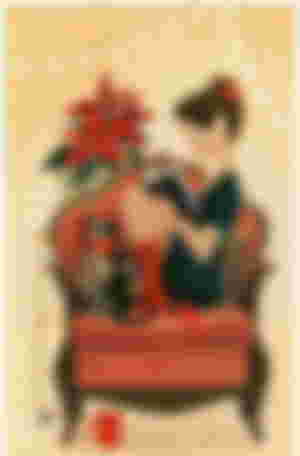Ending A Story; How to Give a Perfect Ending to Your Story.
Closing a story might be an agonizing and frustrating process. We all want the perfect ending, one that leaves both ourselves and our viewing public satisfied. It's not as simple as it looks; an ending takes on a different meaning when you realize there's no turning back once it's completed. Because the ending of your story is often the one that a reader remembers the most, it's important to make a fuss over just about as much as you did the with flawless first paragraph.
Fortunately, there is a limit to how many different ways you can end your story. The way you end your piece should be closely related to how you've conveyed the plot of the book. You should be aware of what you are doing. Once you've decided to write, you should have an idea of whatever you're trying to say and thus have a concept of the impact you want to consider leaving once the story is finished.
There's also an idea that story lines can have only five potential scenarios, but to help you complete your masterpiece, this are six different kinds of endings you could consider.

1. a Conclusive Ending
If you want it all nicely wrapped and stored, a cleared up ending is ideal. All of the storylines and character threads have been resolved. There is no speculation and no sequence of questions. Everybody in the story has a known fate, and it is evident how well the characters will live on in the future. This is useful if you're writing a standalone novel or wrapping up a series.
Mysteries are two examples that come to mind right away. Despite the fact that the majority of a mystery novel is shrouded in cliffhangers and uncertainty, everything is revealed to the reader at the story's climactic conclusion. Typically, one or even more people solve the case and expose the perpetrator or source of the distress. a style that is frequently used The 'whodunnit' story is a popular style that uses this ending; an excellent example is Stephen Donaldson's The Man Who Tried To Get Away.
Fairy tales almost always have resolved endings. But don't be fooled into thinking that this type of conclusion must be all roses. A story could be resolved even if it is not happily resolved. Consider these original fairy tales that aren't so Hollywood-perfect.

2. Unresolved Ending
This is essentially the inverse of a resolved ending. Based just on textual information, the integrated and holistic plot is left unfinished, and the eventual result of the characters' story arcs is unknown. This could be used to lure readers in using their imagination and come up with their own satisfying ending. It's more commonly used it to set up a sequel. References are generally made to tasks that have yet to be completed or conflicts that have yet to be resolved, basically making the novel one large chapter of a bigger story.
Evidently, that's one of the simplest endings to construct. Readers understand that nothing has to have been wrapped up here, but it's still essential to make a sense of joy and anticipation by using an unresolved ending; otherwise, the story will be boring. People may be uninterested in returning for the second installment. There are numerous famous examples to consider, including Tolkien's Lord of the Rings trilogy, Rowling's Harry Potter series, and C. S. Lewis' The Chronicles of Narnia books.

3. Implied Ending
This is frequently the most enticing finale for a writer and the most vexing for a reader. The conclusion, or 'what happens at the end,' is not stated or displayed explicitly. This is accomplished by hiding information or leaving numerous logical explanations open, allowing readers to form their own opinion. The audience is denied complete transparency of the outcome. They could well be left with a number of unanswered questions, including: They could well be left with a number of unanswered questions, including:
• 'Is she still alive or dead?'
• 'Was it that or was it that?'
• 'Is the narrator telling the truth or lying?'
This ending is indeed very efficient because it generates discussion and keep the audience thinking long after they've finished the book. As an example, I'm uncomfortably divided between the two. It took me a few months and a discussion with my mom, who also had read the story, to choose one ending over another.

4. Make a tail twist Ending
In theory, a plot that wraps up in this manner surprises the audience with a totally unexpected twist.
As a result, the entire story is typically turned on its head, with a previously assumed fact proving to be false. This could be a character 'resurrecting' from the grave, a hero uncovering themselves to be an antagonist (or vise - versa), or an unique and vital bit of information emerging at the very last minute. A 'twist' ending is great for playing with the emotions of readers.
Fight Club by Chuck Palahniuk is a novel (and movie) that comes to mind immediately. The revelation near the end of the book will have you rerunning every having experience in your mind, completely changing your knowledge of the story. Here's a list of six more from the best plot twists in literature, topped by Fight Club.

5. Tying-Back Ending
Simply put, a piece written in this style will start and end in the very same way. The ending is discovered first, followed by the author's explanation about how that ending happened to come to be. While this reduces the suspense and tension, a clever author can still bring twists and surprises. A tie-back ending as well allows for a more focused writing style – and it is always simple to navigate when you know where you're going, right?
It also gives the story a sense of balance and equilibrium. Kurt Vonnegut, an American author, gave many advice to writers, including the advice to "start as near to the end as possible." The Star by Arthur C. Clarke is a prime illustration of a tie-back ending; the start depicts a protagonist in pain, and also the ending ties back to the source of his pain.

6. Crystal Ball Ending
In some ways, this conclusion goes 'beyond the ending,' looking at the bigger picture. It tells the story of what tends to happen to the character’s decades after the biggest points of the story. It describes what happened to the character’s decades after the story's main events.
Writers and readers alike may believe they would like this ending. They need to see more of their favorite characters – but it isn't always necessary.
An epilogue is a common way to write a 'crystal ball' ending.
A segment in which the main character's child, who'd been missing from the main story, provides an example. Harry Potter and the Deathly Hallows fits neatly into this category, with a final chapter set 19 years after the main story.

That's all there is to it! six possible endings to take into account when completing the story, novel, or script.







